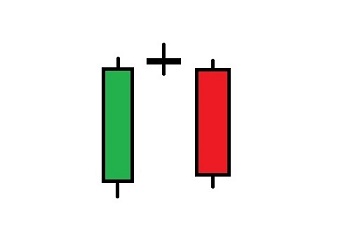Understanding Price Charts

Analyzing price charts is a fundamental skill in technical analysis, allowing traders and investors to assess market trends and make well-informed trading decisions. These charts display historical price data for various timeframes, helping traders recognize patterns, support and resistance levels, and overall market sentiment.
Note: The presence of a pattern does not guarantee a specific future price movement. It is merely a repetitive formation that can assist in making analytical conclusions. For the best results, technical analysis should be combined with fundamental analysis.
Interpreting Chart Data
Objective: To understand the key elements of price charts and how to interpret them effectively.
Reading a price chart involves visually assessing market data, including opening, closing, high, and low prices across different timeframes. By understanding these elements, traders can identify trends, interpret price signals, and make data-driven trading decisions.
Contents
- Introduction to Price Charts
- Key Chart Components
- Understanding Candlestick Charts
- Types of Candlestick Patterns
- Example: Bitcoin Candlestick Chart Analysis (1D Timeframe)
Introduction to Price Charts
Price charts serve as essential tools in technical analysis, allowing traders to track price fluctuations over time, detect patterns, and anticipate potential price movements.
Types of Charts
- Line Chart: Connects closing prices over a specific period with a simple line. It offers a clear market trend but lacks detailed price movement information.
- Bar Chart (OHLC): Displays the opening, high, low, and closing prices for each period, offering a more detailed view of price action.
- Candlestick Chart: The most widely used chart type, offering a visually intuitive representation of price movement.
Key Chart Components
- X-Axis (Horizontal): Represents time.
- Y-Axis (Vertical): Represents price.
- Volume: Displays the number of transactions during a specific period, usually represented as a histogram below the main chart.
Understanding Candlestick Charts
Candlestick Structure

Each candlestick consists of two main parts:
- Body:
- Represents the difference between the opening and closing price.
- A green/white body indicates a price increase, while a red/black body signals a price decrease.
- A long body suggests strong price movement, while a short body implies price consolidation.
- Wicks (Shadows):
- Upper wick represents the highest price.
- Lower wick shows the lowest price.
- Long wicks indicate market volatility, while short wicks suggest price stability.
Types of Candlestick Patterns
Bullish Reversal Patterns
- Hammer: A small body at the upper part with a long lower wick, signaling a potential trend reversal from bearish to bullish.

- Morning Star: A three-candle formation consisting of a red candle, a small-bodied candle, and a long green candle, suggesting a bullish reversal.

Bearish Reversal Patterns
- Shooting Star: The opposite of the Hammer which appears at the top of an uptrend, indicating a possible price decline.

- Evening Star: The opposite of the Morning Star, signaling a bearish reversal with a green candle, a small candle, and a final long red candle.

Example: Bitcoin Candlestick Chart Analysis (1D Timeframe)

- Trend: Upward movement with consecutive higher highs and higher lows.
- Candlestick Patterns: A hammer at the bottom of a decline suggests a bullish reversal.
- Volume: A spike in trading volume confirms a strong breakout.
- Wicks: Long lower wicks indicate strong buying support at lower price levels.
Conclusion
Interpreting price charts is a crucial aspect of technical analysis. Understanding different chart types – line, bar, and candlestick charts – and being able to assess open, close, high, and low prices helps traders recognize patterns and market trends.
Analyzing candlestick formations and trading volume allows traders to identify potential turning points in the market. However, practice and experience are essential for mastering chart interpretation and conducting effective technical analysis.
Share Post
Share on Telegram
Share on X
Share on Facebook
Share on LinkedIn
Help us improve – leave your feedback
Suggested topics
YouHodler is regulated in Switzerland, the EU and Argentina.
YouHodler SA
Registered financial intermediary
YouHodler Italy S.R.L.
VASP registered at OAM / MICAR
YouHodler SA
Registered as VASP with Banco de España
YouHodler SA Branch in Argentina.
Registered as a VASP with the CNV.







